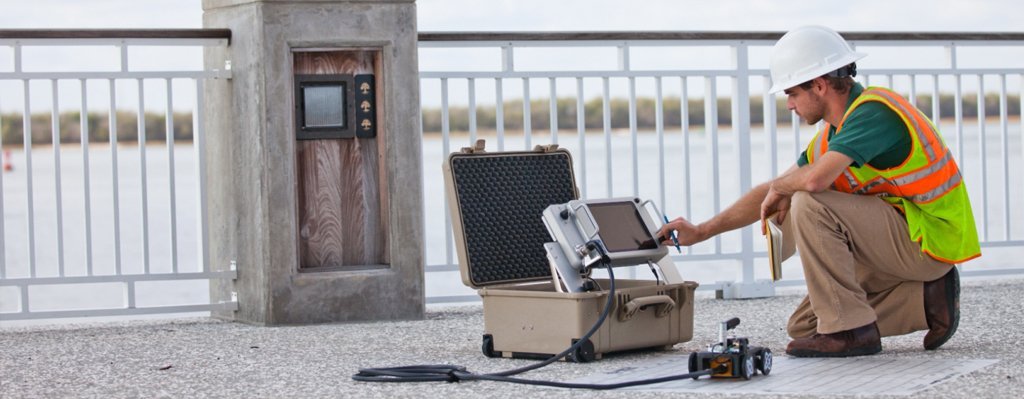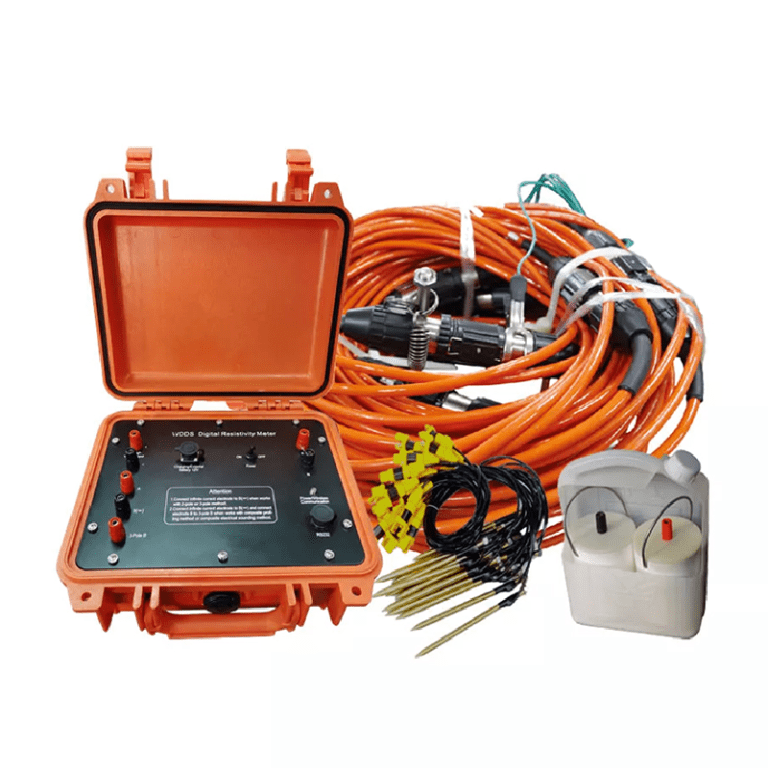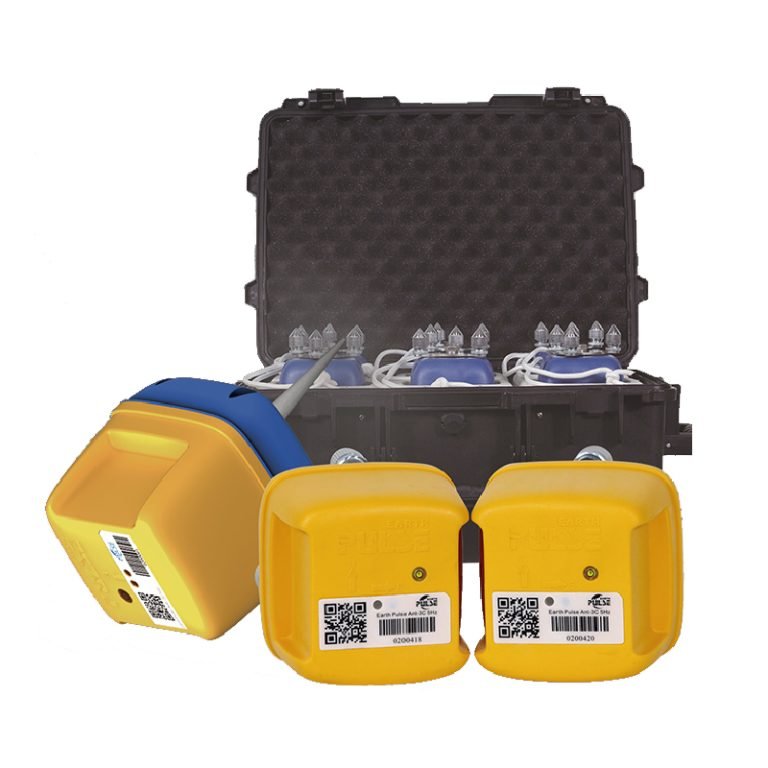Welcome to Geotech!

Road Underground Disease Detection Solution
- Solutions, Radar Solutions
- 57 views
Description
Radar Solution:Road Underground Disease Detection Solution
Ⅰ.Project overview
Due to the construction of the subway lines, underground works, stations and other ancillary buildings on the main road of S City, the traffic pressure on some road sections has increased sharply, and large vehicles and construction vehicles have negative impacts on the road surface and subgrade structure. The underground construction such as pipe gallery construction, shield machine construction will have an impact on road soil.
Moreover, due to underground construction, the nearby water level drops, which will also increase the effective stress in the soil body, resulting in road settlement and further voids or cavities.
Ⅱ. Project issues
During the construction of the subway tunnel, before construction and after completion, the roads in the construction-affected area shall be inspected for road underground diseases, and regular inspections shall be realized. The occurrence of road underground disease bodies (such as voids, voids, looseness, rich water, etc.), which will have a negative impact on the operational safety of urban roads. Road underground disease may affect the traffic and safety of the city. Therefore, it is necessary to detect and repair in time, and select a suitable and fast detection method.
Ⅲ. Instructions
According to the requirements of field conditions and detection depth, 3D and 2D GPR are mainly used for detection, other geophysical methods are used for supplementary verification. As a new technology of nondestructive testing, GPR has the advantages of continuous, nondestructive, high efficiency and high precision.
According to the propagation characteristics of electromagnetic waves in lossy media, GPR emits high-frequency electromagnetic waves (main frequency is several megahertz to gigahertz) into the medium with broadband short pulses, when encountering an inhomogeneous body (interface), a part of the electromagnetic wave will be reflected, and its reflection coefficient is determined by the relative permittivity of the medium, processing and image interpretation of the reflected signal received by GPR mainframe to achieve the purpose of identifying hidden targets.
The working principle of GPR is shown in the figure 3.1:


Figure 3.1 Schematic diagram of GPR working principle

According to the situation on site, 3D GPR is used for the road survey, after that 2D GPR is used for retest the abnormal area in detail to verify and determine the specific location of the cavity and spatial distribution form.

Ⅳ. Achievements






FAQ
The double tap has a large current and can be used for IP testing to get more accurate data.
High-density apparent resistivity method is an array prospecting method, also known as automatic apparent resistivity system, which is developed from direct current method. Its function is equivalent to the combination of quadrupole sounding and electrical profiling method. The artificial electric field is formed by supplying electricity to the underground through electrodes. The distribution of the electric field is closely related to the distribution of the resistivity of the underground rock and soil medium. By measuring the artificial electric field at different parts of the surface, the distribution of the apparent resistivity of the underground medium is understood, and the underground geological structure is inferred and interpreted based on the distribution of the apparent resistivity of the rock and soil medium.
The principle of high-density electrical method is the same as that of traditional resistivity method. It is a combination method of multiple devices and multiple pole distances that integrates electrical depth sounding and electrical profiling method, which can obtain the conductivity characteristics of two-dimensional underground media. It has the characteristics of multi-device data acquisition in one pole arrangement, and highlighting abnormal information by obtaining ratio parameters, which greatly increases the amount of collected data, improves work efficiency, and ensures the accuracy and reliability of the pole running process.
This method is particularly sensitive to the water content of the surrounding rock. If the surrounding rock is broken and contains water, its apparent resistivity is significantly reduced. The apparent resistivity of intact and hard rock and soil is significantly higher than that of the surrounding rock in the fault zone or broken zone and water-rich zone. This method has a clear principle and intuitive images. It is a geophysical method with high resolution. In recent years, with the improvement of computer data acquisition technology, the exploration efficiency has been greatly improved, the coverage area and detection depth of the profile have been increased, reliable data can be obtained in a strong interference environment, the signal-to-noise ratio has been greatly improved, and the geological body can be accurately detected. This method has been widely and successfully applied in engineering and hydrogeological exploration and exploration of mineral and water resources.
(1) Application in coalfield and mine goaf detection
(2) Non-destructive detection of termite nests in dam foundations
(3) Karst and foundation surveys of railways, roads and tunnels
(4) Delineation of stratum lithology boundaries
(5) Survey of the leakage range of landfills
(6) Ancient tomb surveys
(7) Detection of sewage pipes
(8) Non-destructive testing of leakage in reservoirs and river dams
(9) Detection of bedrock fracture zones
(10) Soil salinity and water quality surveys
(11) Detection of ancient tunnels, air-raid shelters, metal burial sites, etc.
(1)The high-density resistivity method is based on the resistivity method, so it is suitable for all underground explorations with obvious conductivity differences;
(2)Any medium underground will have a weak polarization potential at the moment of power on and off, which will affect our measurement of the true potential difference. When the electrode distance is small, the loop current is large, which has little effect on the measurement results; when the electrode distance is too large, the interference potential is close to the effective potential, which has a greater impact on the measurement results. Therefore, due to the influence of the power supply electrode distance, the exploration depth cannot be too large, generally within 100m. When the conductivity of the soil medium is good, it can be appropriately increased, and the exploration depth in the soil medium with poor conductivity is appropriately smaller;
(3)It is generally less used in cities, near large transmission lines, etc. due to site restrictions and industrial stray current interference; 4. In areas such as concrete pavements and exposed bedrock surfaces, it is also less used due to the difficulty of electrode layout.
-1.png)





